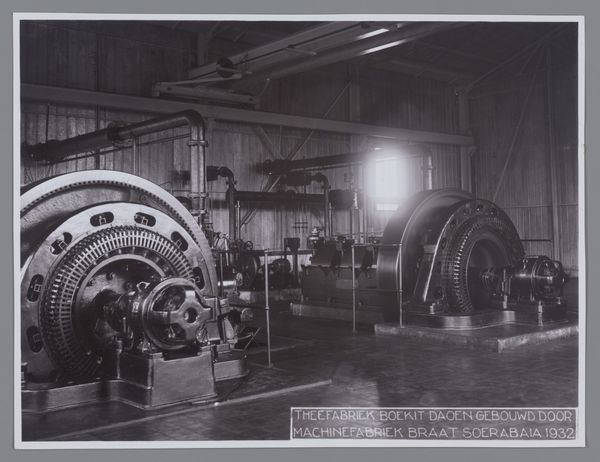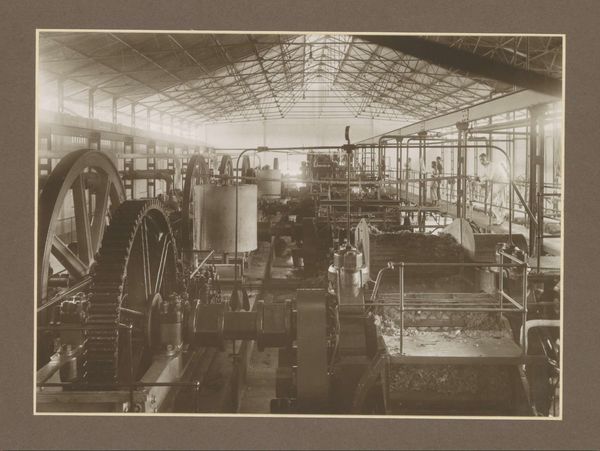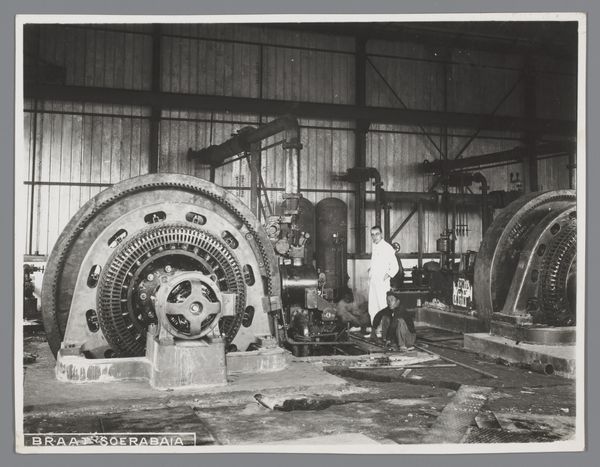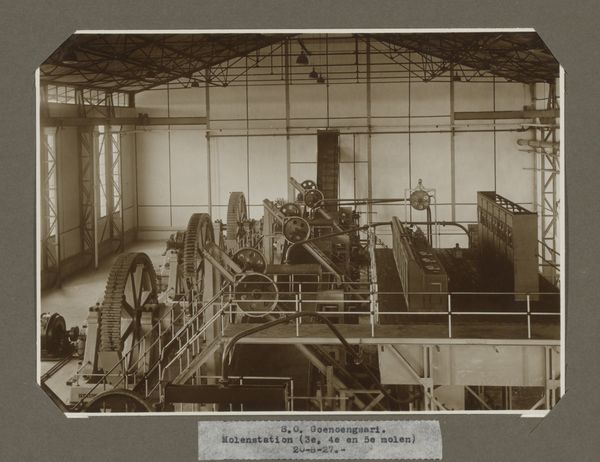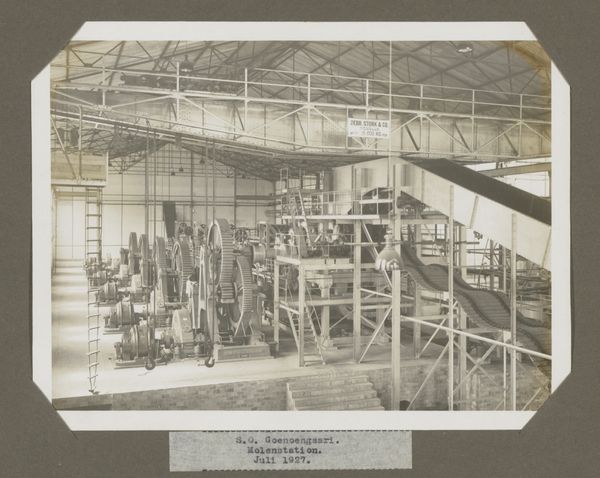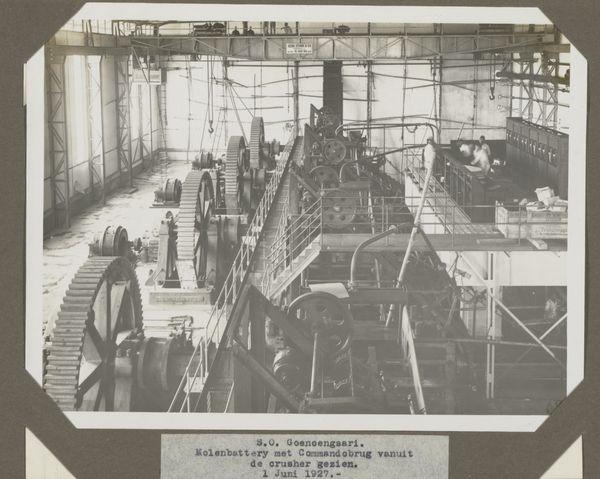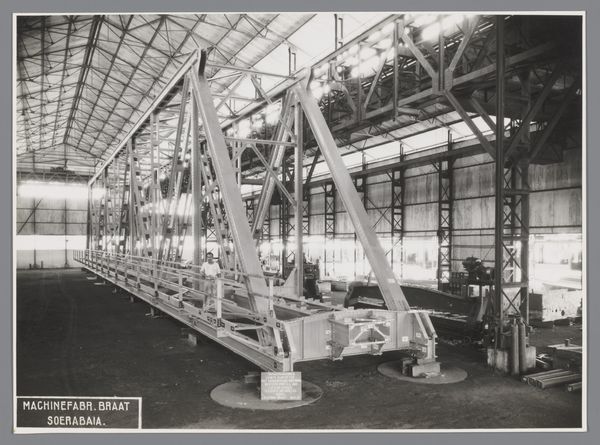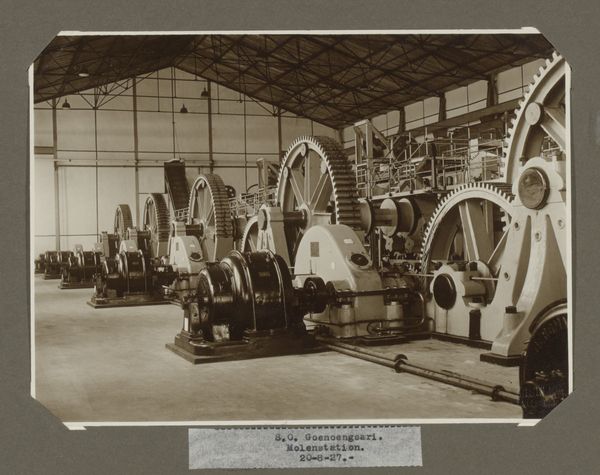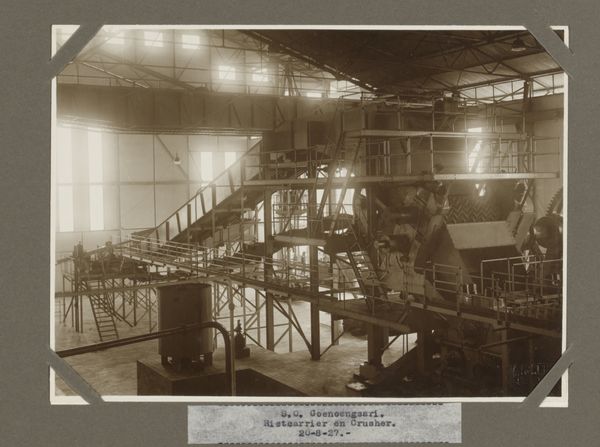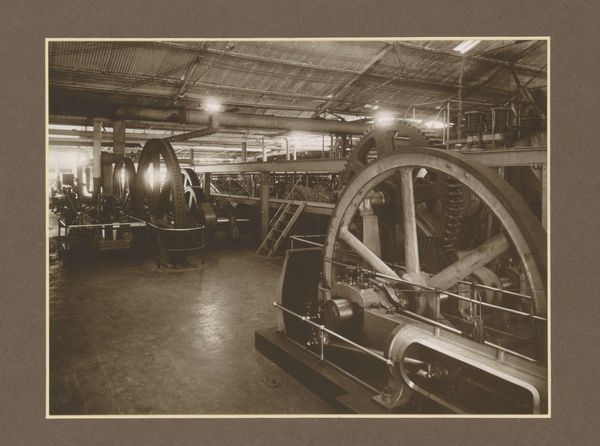
photography
#
precisionism
#
photography
#
geometric
#
realism
Dimensions: height 175 mm, width 235 mm
Copyright: Rijks Museum: Open Domain
Curator: This photograph, titled "S.O. Goenoengsari. Molenhuis & Motoren. 1 Juni 1927.," captures the interior of what appears to be a machine house. Its industrial subject matter marks it clearly in the photographic output of 1927. Editor: Wow, what a powerhouse of gears! My first thought is: this space hummed, probably roared. Look at the scale, the repetition, those enormous wheels—it almost has a pulse, doesn't it? You can imagine the smell of oil and maybe the faint echo of the engineers and workers bustling about. Curator: Absolutely. It’s a striking depiction of industrial power and the visual language really echoes precisionism, but its realism grounds the image in its immediate socio-economic context. Given its title and implied Indonesian origins, we must consider the photograph in light of Dutch colonial activity and resource extraction in the period. Editor: Right, the date becomes important then, doesn't it? June 1st, 1927—what stories could this machine house tell if it could whisper of its time and function? Thinking of what the relentless engine could do back then. What did these machine churn out for people in far distance lands? The photography also highlights such geometrical rigor in how machines were assembled. Curator: The photographic technique here isn’t simply documentary, the play of light and shadow almost fetishizes the machinery, underscoring a colonial perspective on progress and modernization as inherently desirable, a sort of mechanized manifest destiny that erases any considerations for the people affected. Editor: That gives me pause. I originally saw almost beauty in those metallic teeth of gears. Now it's almost oppressive because of how huge everything is and how little natural light you see. Perhaps a better analogy might be if gears replaced the nature. You might consider if human presence makes the artwork even bleaker, or would you say that by showing them you somehow offer it meaning? Curator: Well, given the photographic realism, it seems the photographer focused on rendering an objective truth of the factory which then turns those machines into objective power centers as such a place as this serves or profits a colonizing center far away. Editor: That's powerful to keep in mind; these motors drove not only production, but a much larger world system of exploitation as well. Curator: Indeed, I'm glad we've managed to extract so many layers of meaning, shifting our gaze away from a surface appraisal to a broader structural analysis. Editor: Precisely, from silent gears to shouting volumes about society, progress, and the stories objects unknowingly embody.
Comments
No comments
Be the first to comment and join the conversation on the ultimate creative platform.
